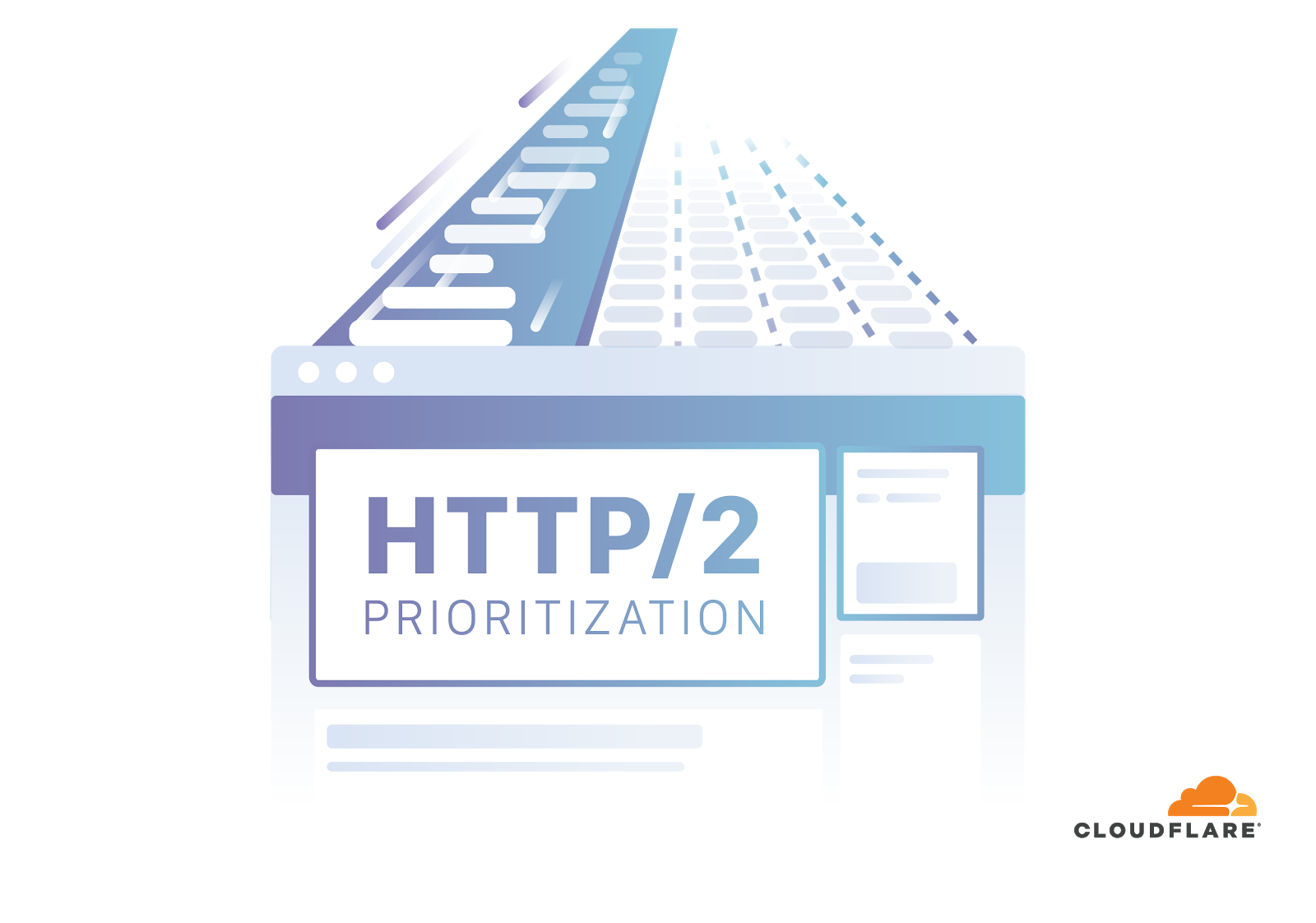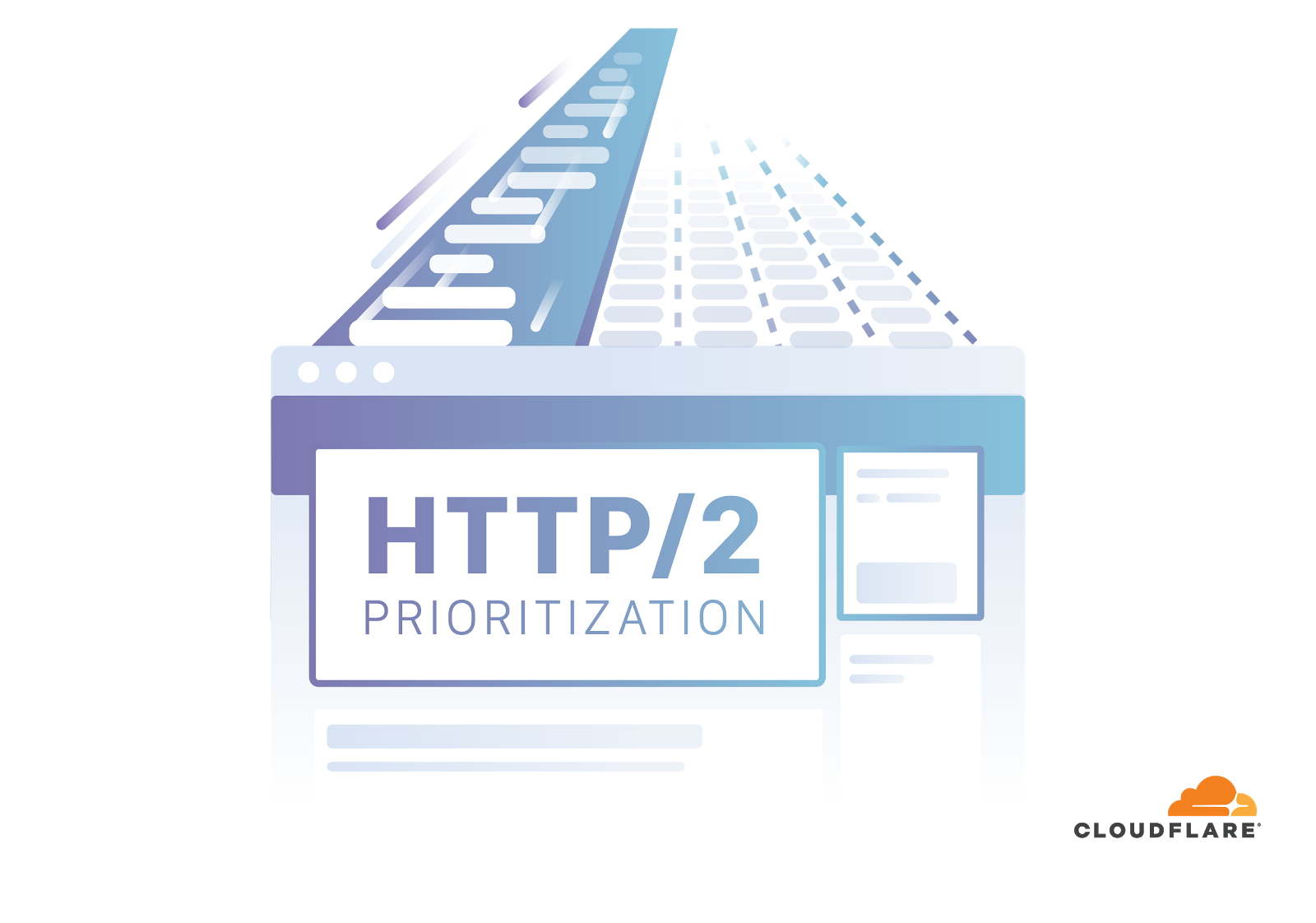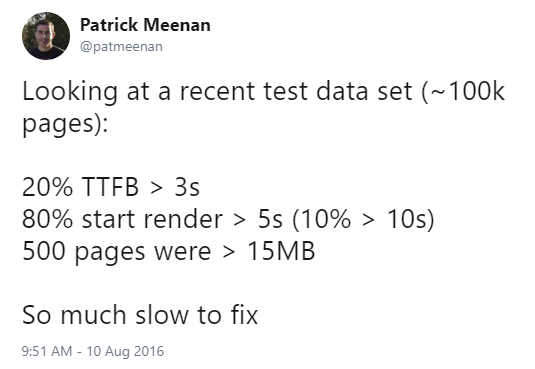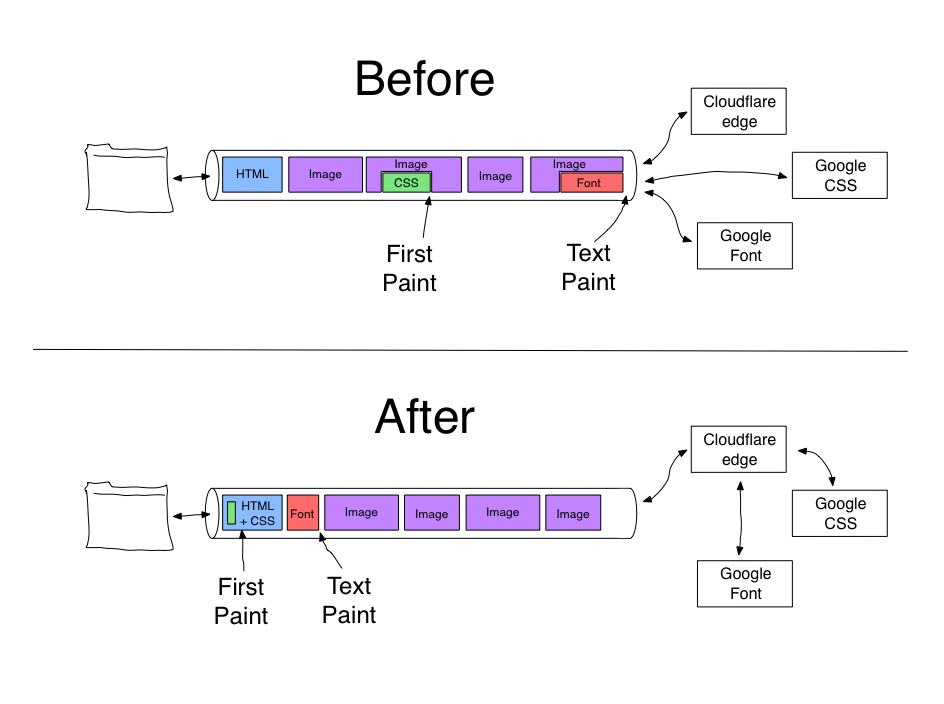Author Archives: Patrick Meenan
Author Archives: Patrick Meenan


HTTP/2 promised a much faster web and Cloudflare rolled out HTTP/2 access for all our customers long, long ago. But one feature of HTTP/2, Prioritization, didn’t live up to the hype. Not because it was fundamentally broken but because of the way browsers implemented it.
Today Cloudflare is pushing out a change to HTTP/2 Prioritization that gives our servers control of prioritization decisions that truly make the web much faster.
Historically the browser has been in control of deciding how and when web content is loaded. Today we are introducing a radical change to that model for all paid plans that puts control into the hands of the site owner directly. Customers can enable “Enhanced HTTP/2 Prioritization” in the Speed tab of the Cloudflare dashboard: this overrides the browser defaults with an improved scheduling scheme that results in a significantly faster visitor experience (we have seen 50% faster on multiple occasions). With Cloudflare Workers, site owners can take this a step further and fully customize the experience to their specific needs.
Web pages are made up of dozens (sometimes hundreds) of separate resources that are loaded and assembled by the browser into the final displayed content. This includes the Continue reading


Every year, we celebrate Cloudflare’s birthday in September when we announce the products we’re releasing to help make the Internet better for everyone. We’re always building new and innovative products throughout the year, and having to pick five announcements for just one week of the year is always challenging. Last year we brought back Crypto Week where we shared new cryptography technologies we’re supporting and helping advance to help build a more secure Internet.
Today I’m thrilled to announce we are launching our first-ever Speed Week and we want to showcase some of the things that we’re obsessed with to make the Internet faster for everyone.
When we built the software stack that runs our network, we knew that both security and speed are important to our customers, and they should never have to compromise one for the other. All of the products we’re announcing this week will help our customers have a better experience on the Internet with as much as a 50% improvement in page load times for websites, getting the most out of HTTP/2’s features (while only lifting a finger to click the button that enables them), finding the optimal route across Continue reading

The Time to First Byte (TTFB) of a site is the time from when the user starts navigating until the HTML for the page they requested starts to arrive. A slow TTFB has been the bane of my existence for more than the ten years I have been running WebPageTest.
Looking at a recent test data set (~100k pages):
— Patrick Meenan (@patmeenan) August 10, 2016
20% TTFB > 3s
80% start render > 5s (10% > 10s)
500 pages were > 15MB
So much slow to fix
There is a reason why TTFB appears as one of the few “grades” that WebPageTest scores a site on and, specifically, why it is the first grade in the list.

If the first byte is slow, EVERY other metric will also be slow. Improving it is one of the few cases where you can predict what the impact will be on every other measurement. Every millisecond improvement in the TTFB translates directly into a millisecond of savings in every other measurement (i.e. first paint will be 500ms faster if TTFB improves by 500ms). That said, a fast ttfb doesn't guarantee a fast experience but a slow ttfb does guarantee a slow Continue reading

Google Fonts is one of the most common third-party resources on the web, but carries with it significant user-facing performance issues. Cloudflare Workers running at the edge is a great solution for fixing these performance issues, without having to modify the publishing system for every site using Google Fonts.
This post walks through the implementation details for how to fix the performance of Google Fonts with Cloudflare Workers. More importantly, it also provides code for doing high-performance content modification at the edge using Cloudflare Workers.
First, some background. Google Fonts provides a rich selection of royalty-free fonts for sites to use. You select the fonts you want to use, and end up with a simple stylesheet URL to include on your pages, as well as styles to use for applying the fonts to parts of the page:
<link href="https://fonts.googleapis.com/css?family=Open+Sans|Roboto+Slab"
rel="stylesheet">
<style>
body {
font-family: 'Open Sans', sans-serif;
}
h1 {
font-family: 'Roboto Slab', serif;
}
Your visitor’s browser fetches the CSS file as soon as the HTML for the page is available. The browser will request the underlying font files when the browser does layout for the page and discovers that it needs Continue reading

Getting the best end-user performance from HTTP/2 requires good support for resource prioritization. While most web servers support HTTP/2 prioritization, getting it to work well all the way to the browser requires a fair bit of coordination across the networking stack. This article will expose some of the interactions between the web server, Operating System and network and how to tune a server to optimize performance for end users.
On Linux 4.9 kernels and later, enable BBR congestion control and set tcp_notsent_lowat to 16KB for HTTP/2 prioritization to work reliably. This can be done in /etc/sysctl.conf:
net.core.default_qdisc = fq
net.ipv4.tcp_congestion_control = bbr
net.ipv4.tcp_notsent_lowat = 16384
A single web page is made up of dozens to hundreds of separate pieces of content that a web browser pulls together to create and present to the user. The main content (HTML) for the page you are visiting is a list of instructions on how to construct the page and the browser goes through the instructions from beginning to end to figure out everything it needs to load and how to put it all together. Each piece of content requires a Continue reading